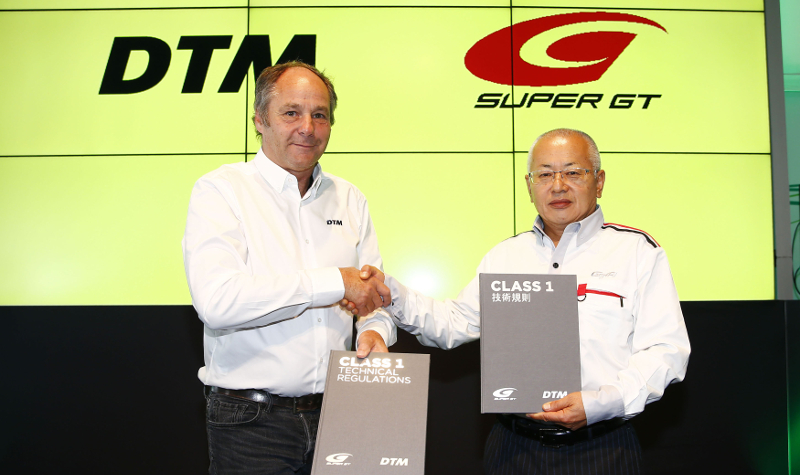The organisers of the DTM and the Japanese Super GT series have jointly presented the new ‘Class 1’ technical regulations which will be adopted by the DTM in 2019 and Super GT in 2020.
At a press conference held at the Norisring, the much-anticipated new direction for both series was presented by Masaaki Bandoh, Chairman of the SUPER GT umbrella organisation GTA and Gerhard Berger, Chairman of the DTM umbrella organisation ITR.
The new regulations are designed to be more enticing to car manufacturers and also to create safe racing, with cheaper running costs and equal opportunities across the board.
“A milestone for international motor racing,” described Berger of the collaboration. “These regulations enable manufacturers and teams to participate in spectacular motor racing at reasonable costs on two continents – and thereby to reach many people.”
Bandoh praised the cooperation between the two series, which will see Super GT run a slightly modified version of the regulations to accommodate the endurance races the series holds.
“I would like to thank Mr. Berger, DTM and SUPER GT manufacturers, and all concerned for your dedication to this project,” said Bandoh. “As you can see from the great success of our show runs done in both Germany and Japan last year, our collaboration has been further deepened.”
DTM will run the regulations in full from 2019, the first year after long-time DTM participant Mercedes leaves the series, whilst Super GT will introduce their slightly modified version the following year.
The last time that a set of regulations entitled ‘Class One’ were introduced to the DTM it resulted in the departure of BMW and Audi from the series in 1993. This time the impetus for introducing the regulations, which has been in discussion for many years, has been accelerated by the impending departure of Mercedes.
“I want to thank Bandoh-san and all the peers that jointly worked on the new ‘CLASS 1’ regulations very much,” continued Berger. “I’m really happy about the fact that DTM and SUPER GT made a crucial step on the way to our goal: to jointly hold races.
“By the creation of these regulations we kept on pursuing our previous course consequently. Furthermore, we set the course for the future of DTM that will fully adopt the new regulations from 2019, thus remaining an attractive platform for the car manufacturers.”
The technical regulations for the series will see common parts getting widespread use, with nearly all components being standardised. The cars will feature a carbon-fibre core with an integrated safety cell which has already been seen to good effect in the DTM.
The engines will see the most significant change, with a two-litre 4-cyclinder turbo engine replacing the V8 units seen in the DTM, producing around 100 bhp more (at around 620 bhp) than the current crop of cars.
This will also result in changes to the front aerodynamics to allow for more cooling air for the engine and brakes. The front and rear diffusers will be modified according to the current Super GT specifications.
The two series will hold joint races in 2019, one in Europe and one in Asia, at circuits which are yet to be confirmed. The races will run to the DTM format, with two races per weekend and no driver swaps.
It has also been confirmed that for the races a one-off Balance of Performance [BoP] will be introduced to enable cars from the two series to compete on equal terms.

